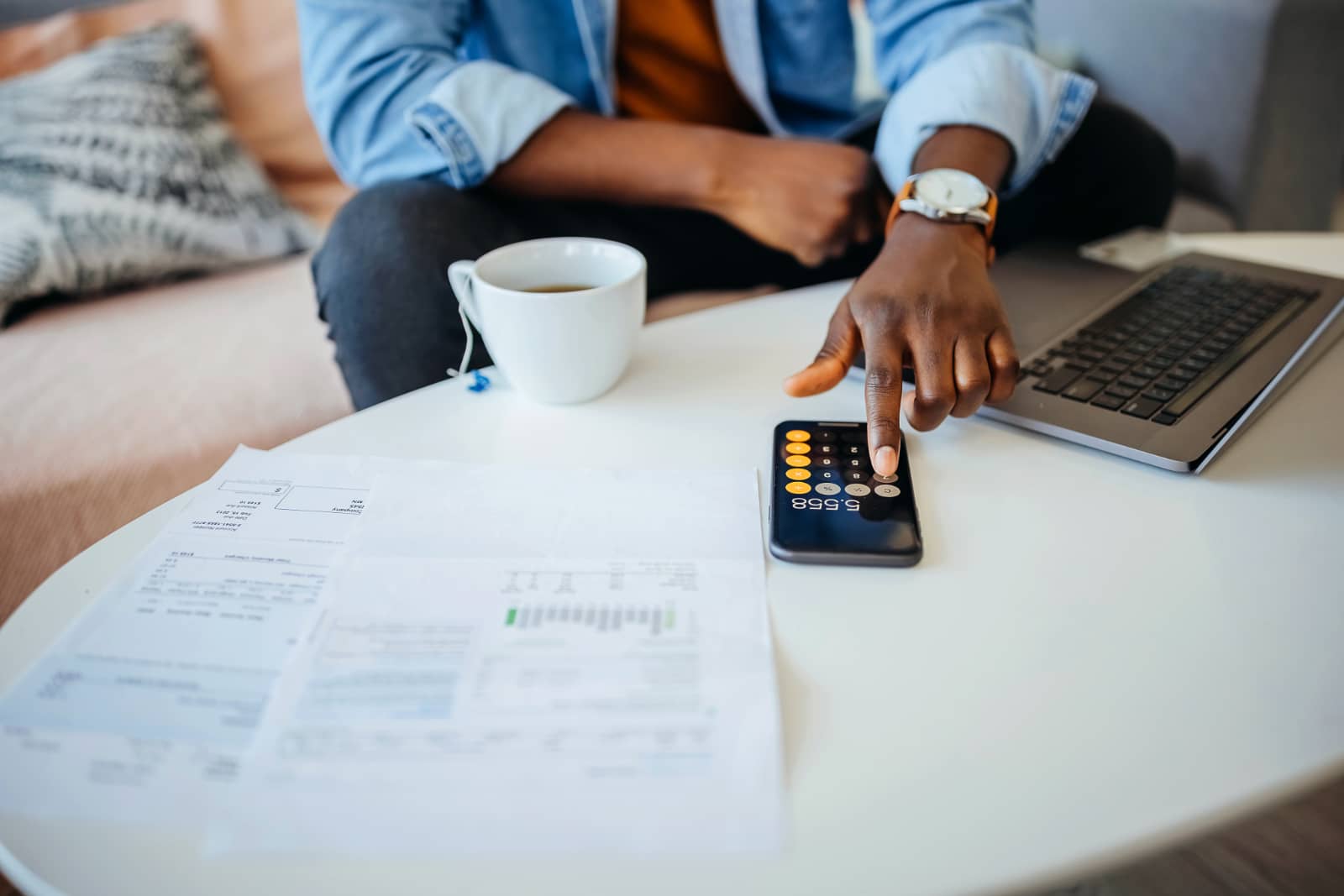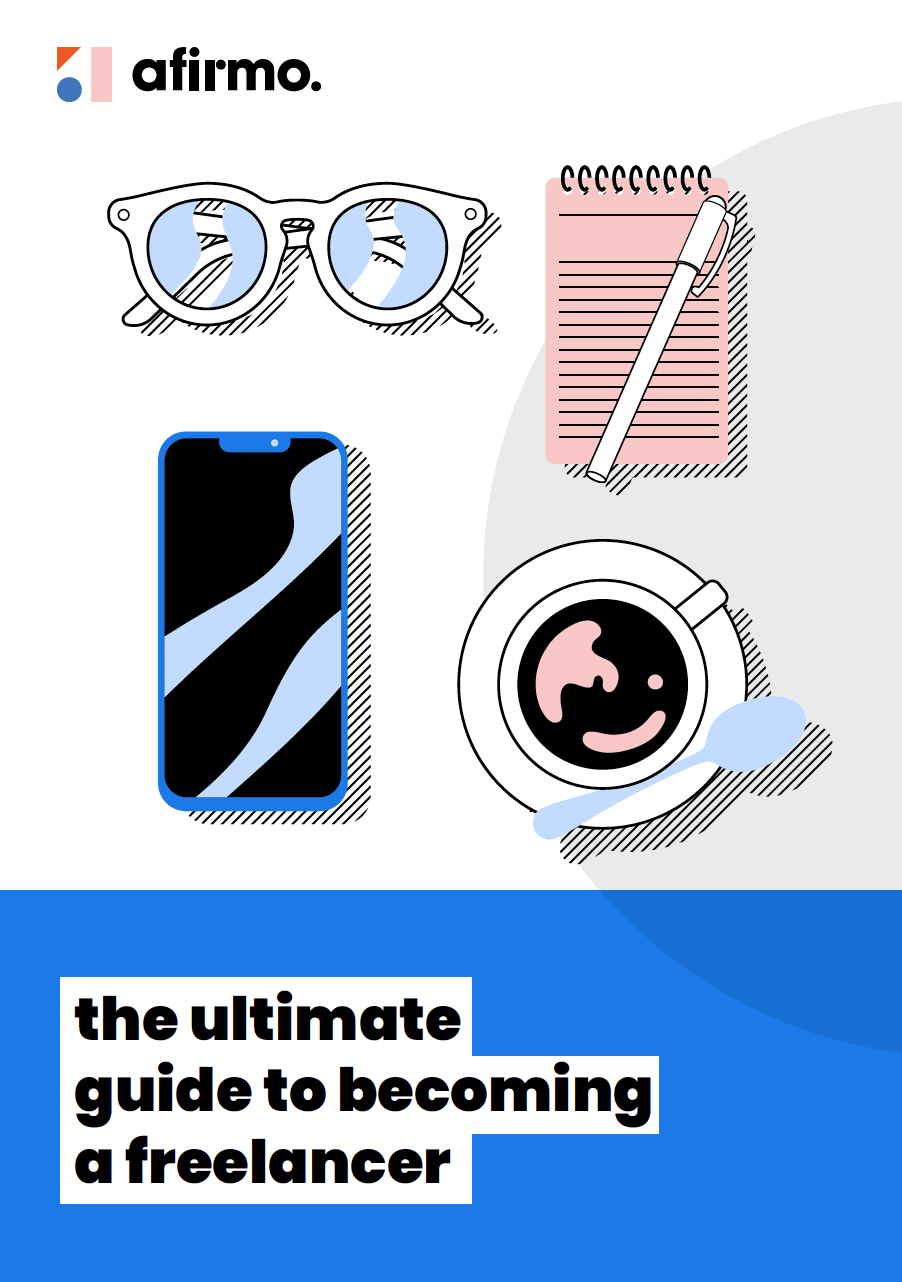Accounting and tax records are often the least enjoyed part of freelancing. But if you plan ahead, don’t let things build up and get help when you need it, you should be fine. Keeping an eye on the numbers, rather than relying on gut feel, is the key to staying afloat and recognising real successes to celebrate along the way.
Getting paid
The first step to managing your finances is making sure you get paid. It’s a good idea to agree to the payment terms with your customers before you start working on their job. They can be included in your written quotes.
When to get paid
For short jobs you might be happy to be paid on completion. If your customer is a medium-to-large organisation they may require an invoice by the 20th of the month and pay it on the 20th of the month following. In other cases, payment within seven days of job completion is quite common.
For new customers you might ask for 50 percent of the agreed price to be paid before you start work. This reduces the risk of non-payment until you know the customer can afford your services and pays on time.
For larger projects it’s common for freelancers to ask for 50 percent of the agreed price when the contract is signed. If the project is particularly large, this might be reduced to 25 percent up front and further instalments as stages of the project are delivered. Another option is to simply invoice monthly for hours spent on work completed to date.
When to send invoices
As a freelancer, you’ll need to provide customers with an invoice for payment. This includes what the payment is for, when it’s due and the ways it can be paid. If you’re registered for GST, your invoice must include your GST number and show the GST component of the amount due.
In New Zealand, you must register for GST and add GST to what you charge customers as soon as you think you will earn more than $60,000 over 12 months. Otherwise registering is optional. If you are registered you can usually claim back the GST paid in business related expenses, but you have to keep records for seven years in case Inland Revenue audits your tax and GST returns.
Efficient freelancers keep track of the hours they have worked for various customers as they go, then send all their invoices out on the 20th of each month.
For small jobs, or as payment milestones are completed in a large project, it can be better to send your invoice as soon as the work is complete. A recently delighted customer is more likely to pay the invoice immediately as a way of saying thank you.
How to follow up on overdue invoices
It’s important to keep track of when each invoice was due and when it was paid. That way you can quickly see when something is overdue. You should also include a section on any late payment penalties in your payment terms agreed to before the job started.
In most cases, your customer will have simply forgotten to pay, or the invoice might not have been loaded into the system of a large organisation.
After a few days the easiest thing is to send a statement, which shows the overdue invoice number, when it was sent and its due date. That’s usually enough to trigger immediate payment and an apology.
If that doesn’t work, keep following up every week until you get paid. After a month, you can drop the ‘gentle reminder’ message and get quite firm. You could also stop all work for that customer until you get paid, depending on your relationship with the customer.
If they continue to make excuses, you can let them know you will employ a debt collector if payment is not received in the next seven days. The next step is to follow through. The debt collector will usually charge a percentage of what’s recovered, but at least you’ll get some money.
It’s also helpful to include a clause in your payment terms explaining that ownership or copyright for your work doesn’t pass to the customer until payment is received in full.
Business accounting as a freelancer
Basic accounting is all about keeping track of money as it flows in and out of your freelance business. These records are used to monitor how your business is going, so you can make informed decisions to maximise your success. They’re also needed when it comes to claiming tax deductions and paying taxes.
Start keeping records as soon as you can
Even before your first income payment as a freelancer, you should start recording your expenses. Collect all receipts for business-related expenses and note what they were for. One of the easiest ways to track your income and expenditure is to open a bank account just for your freelance business and make sure all transactions flow through it. That way you’ll have a complete record to refer to.
Sorting transactions into categories
It’s helpful to sort your transactions into categories, such as sales, vehicle expenses, phone and internet, advertising, stationery, equipment, loan repayments, loan interest, bank fees, income tax, GST paid. An accountant can help you to choose the best categories for your business.
Sorting transactions like this makes it easier to see trends and address potential problems or opportunities early. It also helps you to fine tune forward-looking budgets and cash flow forecasts.
Software to make accounting easy
Modern accounting software packages, like Xero and MYOB, can automatically download your bank account transactions ready for you to sort into selected expense categories or reconcile against each invoice owing. They can even recognise similar transactions and pre-select the category for you, so all you have to do is click OK. At any time you can check for overdue invoices and quickly send a reminder statement.
With each transaction categorised as you go, the software automatically produces a range of handy reports, including your GST returns. The returns can be filed directly online with Inland Revenue, so you just have to pay the amount due through internet banking.
With the amount of time they save and the reassurance they provide, the monthly subscription fees of accounting software packages usually offer great value.
End of year accounts and taxes
The financial year runs from 1 April to 31 March. After 31 March you rule a line under your income and expenses for tax purposes and start again on 1 April for the next year.
Sole traders
As a sole trader, you simply complete an IR3 tax return online using your end-of-year totals. If you’ve kept your records up to date during the year and filed away your receipts, it’s a straightforward task. You can file your tax return for the previous year from 1 April onwards:
- If you do it yourself, it has to be filed by 7 July and you’ll have to pay the tax owing by 7 February
- If you have an accountant or tax agent, they have until 31 March the following year to file your return for you and you’ll have until 7 April to pay the tax owing to Inland Revenue
If your tax bill is more than a certain amount ($2,500 historically, but this increased to $5,000 due to Covid-19) you have to pre-pay your tax for the following year in three installments. This is known as provisional tax and the instalments are based on your previous year’s tax bill.
It’s important to remember that when you first switch to provisional tax prepayments, they will overlap with your one-off tax payment owing for the previous year.
Companies
If you form a company, your end-of-year accounts are used to create an annual financial statement and a tax return. Accounting, tax and government regulations are much more complex for a business that’s a registered company. If you’re working on your own as a freelancer, most experts say there is usually no advantage in forming a company. If you’d like to do so, be sure to talk with an accountant or business adviser before going ahead.
Your Guide to becoming a freelancer chapters
- Chapter 1- Market research and validating your freelance idea
- Chapter 2 – Defining your freelance service and target audience
- Chapter 3 – How to price your freelance services
- Chapter 4 – How to write a freelance business plan
- Chapter 5 – Building your business portfolio
- Chapter 6 – Online presence and marketing
- Chapter 7 – How to manage your time as a freelancer
- Chapter 8 – Managing your finances as a freelancer
- Chapter 9 – How to choose the best insurance for freelancing



